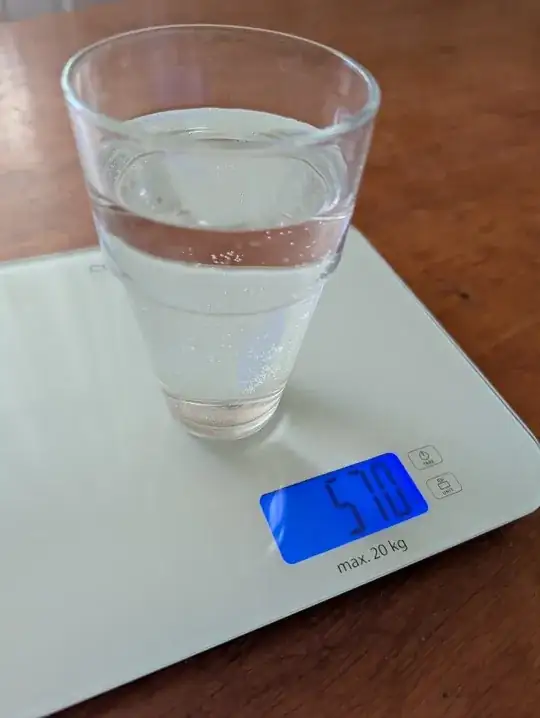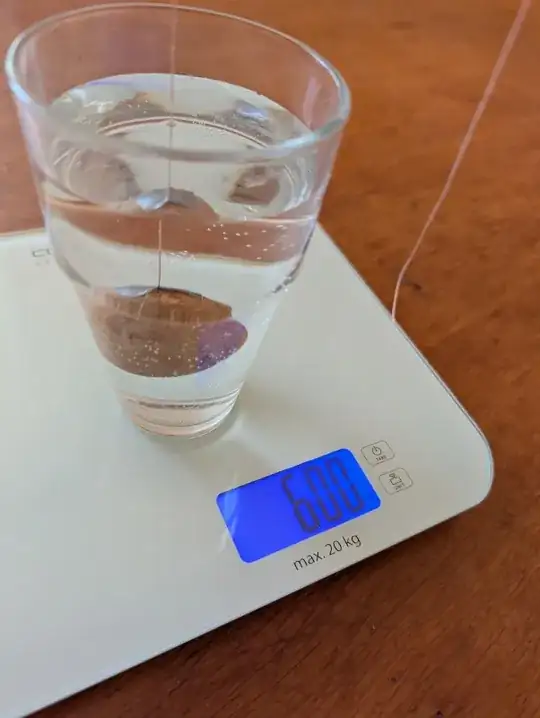I was inspired by the question Which way does the scale tip?, so I have conducted a branch of simplified experiment. I have weighted on the scales glass of water without and with stone immersed inside water and suspended by a thread kept with my hand. Results that I've got are:
And with stone:
So scales shows additional $30~g$ mass, which exactly is mass of water expelled by stone due to Buoyancy force, i.e. $B/g = 1 g/cm^3 \times 30~cm^3~~\{\text{stone volume}\}.$ Stone mass itself is about $70~g$, it's calculated density is $\approx 2.3~g/cm^3$.
So net force acting down on scales is $W_{glass}+B_0.$, i.e. Can we say that exact additional force which is pressing scales down in case stone is immersed inside glass ,- is third Newton force pair reactive Buoyancy force induced from a stone to water ?
In short, can we assume that $B_{stone\to~water} = - B_{water \to stone} $ (i.e. apply third Newton law to Buoyancy) and that $B_{stone\to~water}$ is the exact force which scales measures in a second case ?
I never heard of reactive Buoyancy forces, so here's my doubts and confusion on true nature of this additional force generated.

